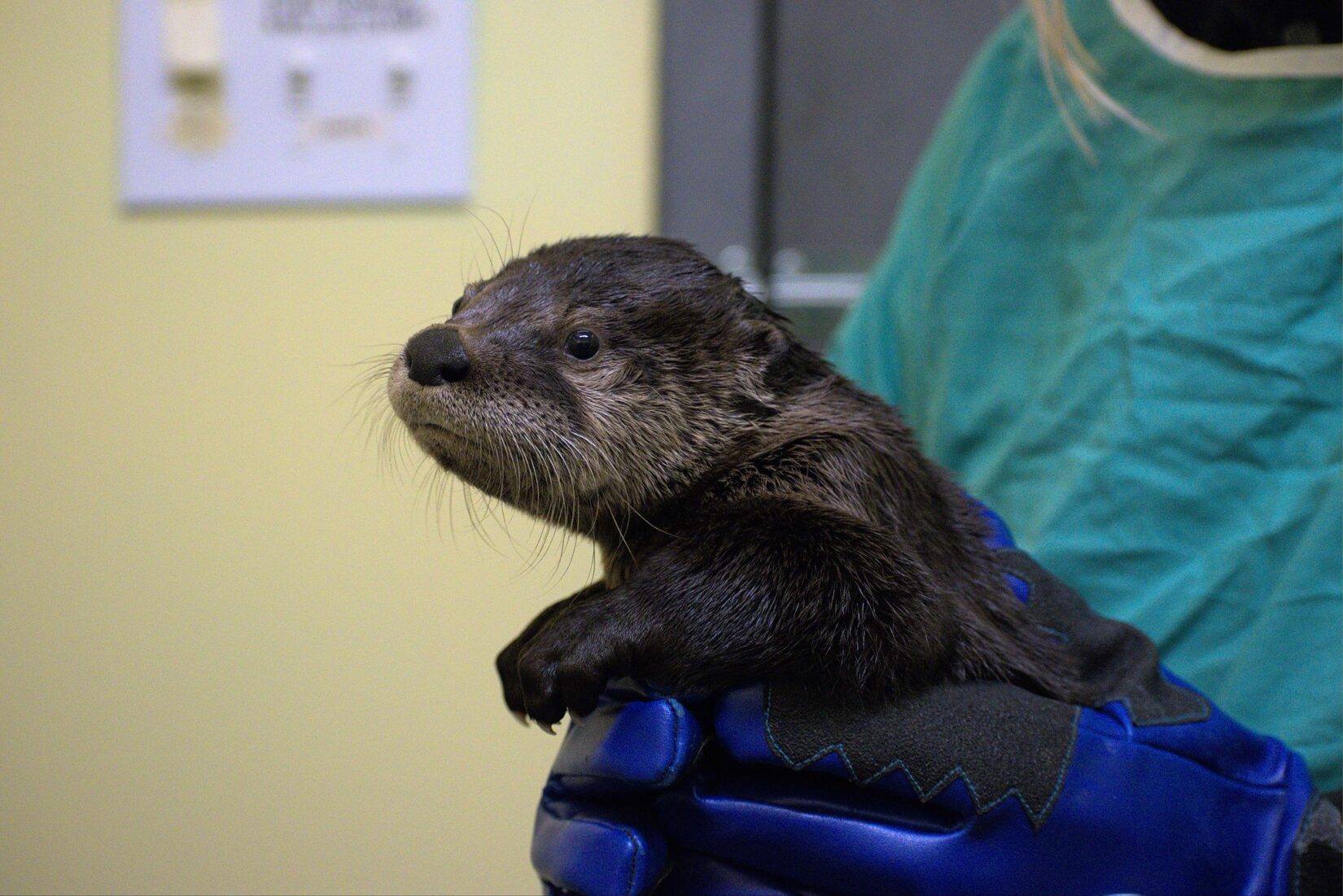British Columbia is home to two species of otters – river otters and sea otters. Sea otters spend their lives in the ocean. They mate, sleep, groom, hunt, and give birth in the water. River otters are often confused for sea otters when they’re spotted in or near the ocean, but river otters are also aquatic mammals that are equally at home in rivers or coastal areas of the ocean. River otters spend much more time on land, but sea otters are very rarely on land.
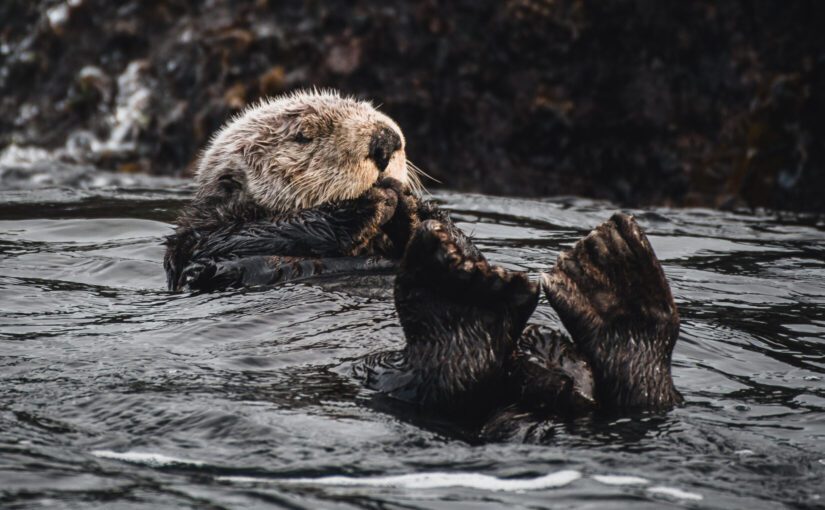
Sea otters are federally protected as marine mammals, and can only be assessed and treated by the Vancouver Aquarium Marine Mammal Rescue Society. However, BC SPCA’s Wild ARC can treat and rehabilitate river otters. Unfortunately, river otter pups most often end up at Wild ARC when their mother is trapped and relocated, struck by a car, or scared away by off-leash dogs. The pups usually spend their first year with their mother learning how to hunt and survive on their own, so similarly spend up to a year in our care while our staff provide them with food and enrichments to help prepare them for life in the wild.
To report a sea otter that you believe is injured, call the Vancouver Aquarium Marine Mammal Rescue Society (VAMMR) at 604-258-7325. If you come across a river otter that is injured or abandoned and you think might need help, contact your local wildlife rehabilitation centre or call the BC SPCA Animal Helpline at 1-855-622-7722 for advice.
To sea-lebrate World Otter Day, we’ve gathered up ‘otterly’ fascinating facts about the notoriously cute and curious otters of B.C. and around the world.
Otter Facts
- River otters can grow up to 1.4 m long and weigh about 13.5 kg. Sea otters grow to about the same length, but are much heavier – anywhere from 15 to 45 kg!
- Otters are found on every continent from Asia to North America, except for Australia and Antarctica.
- There are as many as 13 species of otters found globally.
- The sea otter and the smaller marine otter are found in the Pacific Ocean while river otters and most other species of the mammal live in freshwater rivers, lakes, and wetlands.
- Sea otters have the densest fur of any animal, with as many as a million hairs per square inch. In fact, otters were hunted to extinction along the coast of B.C. during the 1700’s and 1800’s because of their thick fur. The sea otters we have today in British Columbia are descendants of 89 Alaskan sea otters that were relocated to the west coast of Vancouver Island from 1969 to 1972.
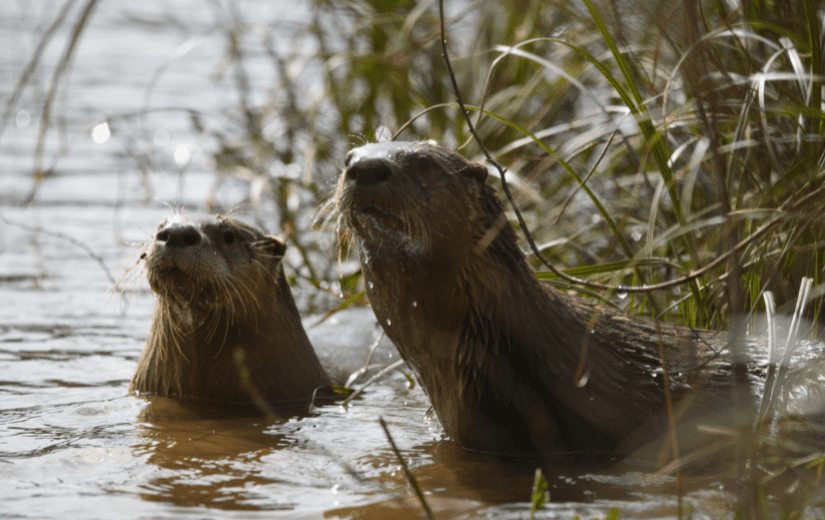
- River otters have some of the longest lasting fur of the entire mustelid family.
- Unlike other sea mammals, sea otters lack a blubber layer and keep warm thanks to their thick, dense fur.
- Sea otters inhabit the Goose Islands, off the central coast of B.C., as well as areas around the northwest coast of Vancouver Island, mainly the area of the Brooks Peninsula. Sea otters also call Checleset Bay Ecological Reserve, home, which is an extensive area of marine shoreline, reefs and islets providing habitat for the province’s recovering sea otter population.
- River otters can be found throughout Canada, but in B.C., they can be found in the Georgia Depression and Coast and Mountain ecoprovinces.
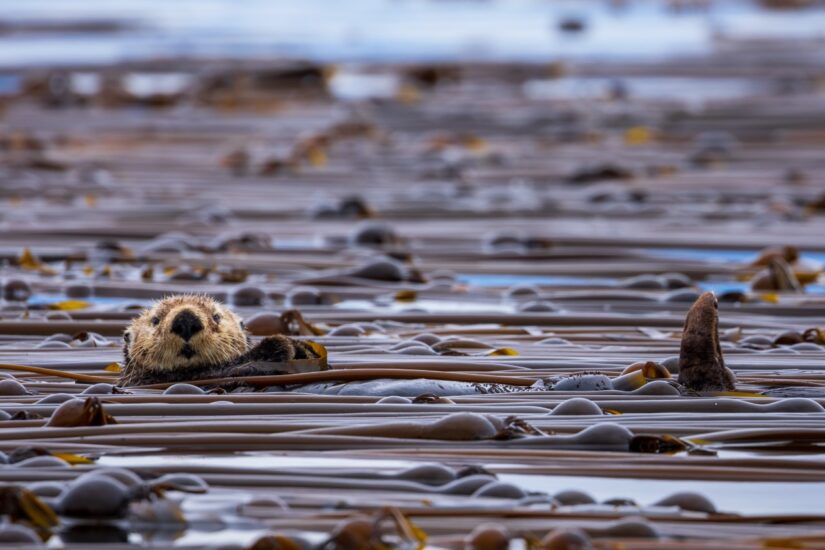
- An otter’s webbed feet and powerful tails act like rudders in the water making them strong swimmers. Meanwhile their fur is waterproof and keeps them warm in cold water.
- An otter’s den is called a ‘couch’ or a ‘holt’.
- In the wild, otters can live up to 16 years of age.
- When it comes to sleeping, sea otters attach themselves to kelp or sometimes intertwine their feet with other sea otters so they don’t float away.
- Otters are expert hunters that eat fish, crustaceans, and other critters, including frogs. They love to eat too – a sea otter can consume up to 11kg of food every day to support its high metabolism, which is about a quarter of its own body weight.
- Sea otters are one of the few mammals who know how to work a tool. Sea otters use rocks to break open their food including clams and crabs. They often keep a favourite rock in a pocket of fur located under their foreleg.
- A group of otters are referred to as a ‘lodge’, ‘bevy’, ‘family’, or ‘romp’. When they are together in water the group is called a ‘raft’.
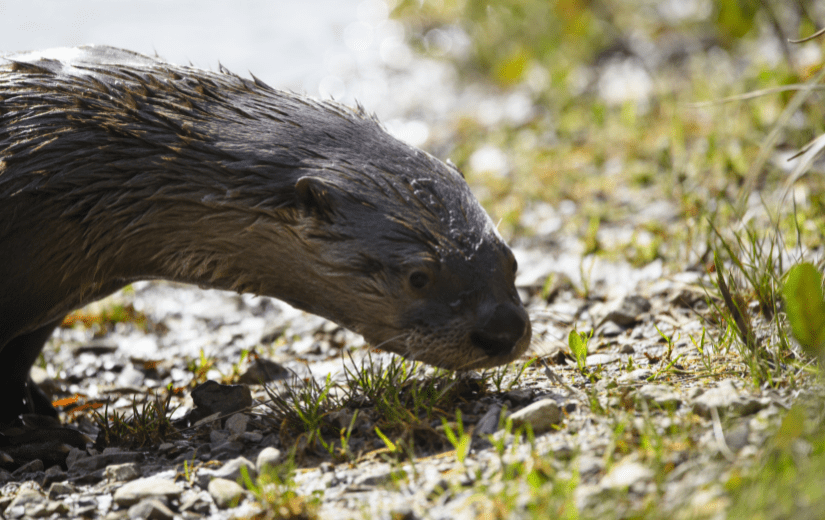
Coexisting with otters
River otters can sometimes get into trouble with people. They are carnivorous mammals that may dig in yards, crop fields, or road embankments to den or in pursuit of prey. Otters sometimes prey on domestic animals like rabbits, chickens, turkeys, or ducks, and can also prey on fish in backyard ponds or den in sheds, boathouses, and under porches.
Once an otter has moved in, trapping is not the solution. You can encourage them to move along by using mild harassment techniques. Read our best practice sheet the learn how to prevent conflict and encourage otters to leave (PDF).

